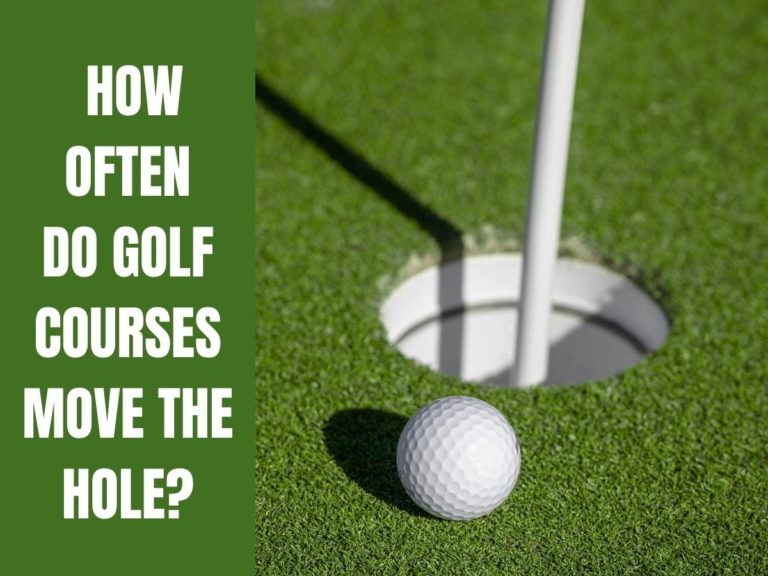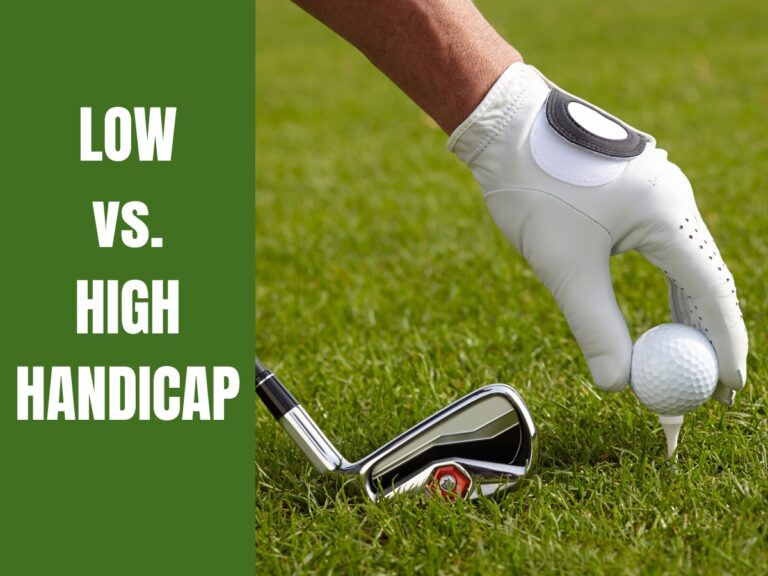Wood vs. Driver: What’s The Difference?
It must be pointed out that a driver was and still is, to some, known as a 1 wood!
Yet knowing the differences between wood and driver golf clubs is imperative to get the most out of your time on the golf course. Understanding the differences will help you know what approach to use for each. So, what are the differences between a wood and a driver?
A driver is more difficult to control as it has a longer shaft, especially given its lower loft. A wood golf club has less potential range than a driver. The loft is higher in a wood. A wood doesn’t hook and slice as a driver. Woods provide greater contact and increased control as they are shorter.
Using the same setup for a wood that you would a driver is impossible as you will not get the best results and vice versa. Here is what to know about the differences between a driver and wood regarding appearance, use, and ease of use.

Difference Between A Wood And A Driver
Drivers and fairway woods used to be constructed of wood in the past, hence the name. Persimmon trees, better renowned for their fruit than their wood, were used to make the majority of wooden clubs.
From the early 1980s, golf club manufacturers developed a metal alternative, which was much cheaper to mass produce. Today titanium and composite materials are commonly used in all driver and wood manufacture, and the old wooden woods are consigned to museums.
A driver was first known as a 1 wood, and woods were number 1-9, similar to irons, and the golfer would choose which ones he required for each round they played.
The name ‘driver’ came from the ‘drive shot’ played from the tee on each hole, which the 1 wood is used to do, but no one can confirm exactly when the term driver replaced the 1 wood in general golf speak.
Today as part of their ‘bag,’ most amateur players carry a driver plus a 3 and 5 wood.
See also: What Do Golf Club Numbers Mean?
Wood vs. Driver
A wood and a driver are essentially the same things. Therefore, it isn’t surprising that they have some similarities. However, there are many differences that golfers should be aware of.
Appearance Differences Of Wood vs. Driver
When looking at the head of the driver compared to the wood, it is readily evident that the driver’s head is substantially bigger. Furthermore, the driver shaft is much longer. Since the driver’s sole is rounded, striking it off the turf is exceedingly challenging.
It can be utilized on the tee for some players. This is why many newbies are told to forget that there is even a driver in their golf bag. As the driver’s face is more curved than wood, this approach, known as the gear effect, was created to reduce miss-hits.
See also: Can You Play Golf Without a Driver?
Wood golf clubs have more loft. The old 1-wood had lofts of around 11 degrees, which kept them in line with the conventional 4 degrees spacing. 3-wood lofts are often 15 degrees, and 5-wood lofts are typically 19 degrees, though this has changed in the last ten years.
There are still low and high outliers, but they aren’t as common. The drivers now vary from 8 degrees to 12 degrees.
The below image is my youngest son’s driver (on the left) and 5-wood side-by-side so you can visualize their differences.

Ease Of Use Between Wood And Driver
Regarding ease of use, drivers are said to be more difficult to hit well with. Suppose you’re wondering why that is the case. Although the great thing about the driver having a long shaft is the fact that the ball goes further, it is also a con, as the long shaft makes it much harder to strike the sweet spot and launch the ball.
Since golfers are positioned farther away from the ball, they must control their swing more carefully to strike it.
Many golfers find that their 3 wood is most useful during that solid contact phase. Since a 3 wood is much shorter and simpler to handle than a driver, most players can consistently make contact with the sweet spot.
Thus, on average, your 3 wood shots will produce greater results than your driver. In addition, the driver’s lower loft tends to produce more hooks and slices. This is because greater loft creates more backspin, which helps offset side spin, which occurs when the golf club isn’t square at impact.
The ball does not really fly offline as readily as when using a driver because the 3 wood’s enhanced vertical spin decreases the amount of sidespin available.
The enormous head and face of a driver are its greatest asset. It’s extremely difficult to entirely duff a driver. Players with less talent frequently believe it is simpler to hit and feel more confident doing so.
However, woods are always the more secure and consistent club for players who can hit them consistently. For various reasons, many go with a wood over a driver: tight fairway, greater difficulty at driver distance, and much more comfort at a particular approach distance.
Occasionally, drivers are just an unnecessary risk when a less powerful club would keep you in play.

Where Is The Wood Used Compared To The Driver?
Both the wood and driver golf clubs have their unique uses.
“Driver for distance and wood for accuracy as a rule of thumb.”
Golf Educate
Woods are much more versatile and can be used from off the tee and off the fairway. Only the cleanest of hitters on the most perfect of lies would dream of hitting a driver off the fairway.
Final Thoughts
As can be seen, when evaluating the difference between a wood and a driver, drivers allow balls to go much further, whereas woods are more accuracy-focused. Furthermore, drivers have longer shafts and bigger heads, whereas woods have more loft. Therefore, a misfired shot with a wood may still be in play as opposed to a driver that finds the trees.
I would always recommend a beginner master the 3 or 5 wood before stepping up to play the driver.






